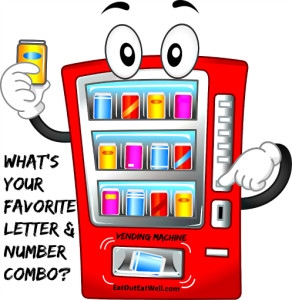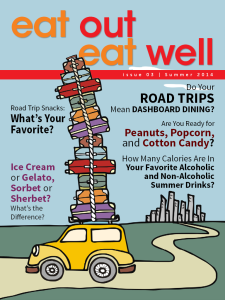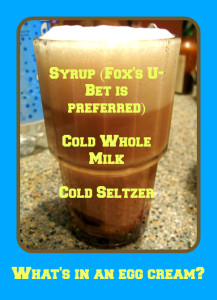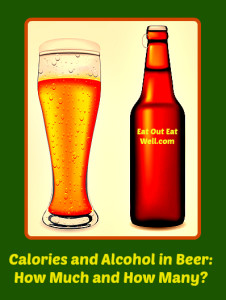 Eating While You Drive Can Be Tricky
Eating While You Drive Can Be Tricky
Have you ever tried to eat a sandwich with lettuce, tomato, mayonnaise, and pickles? It’s hard enough to do when you can eat over a plate on a stable table – trying to eat it in a car means ending up holding two pieces of bread with a lap full of pickles and tomatoes.
Road trip food should meet certain “save your clothes and car” requirements:
- It won’t fall apart, isn’t sticky or slimy, isn’t juicy/watery, and won’t break into a million little pieces when you try to eat it
- It fits into a cooler (remember ice packs) or doesn’t need to be refrigerated
- It’s reasonably healthy and tasty
- It’s grab and go –you don’t need a knife, fork, or spoon to eat it (unless you pull over and have your own picnic) and it doesn’t need to be assembled
- It doesn’t stink – how long do you want to drive smelling of onions, garlic, or stinky cheese.
- Remember napkins, moist towelettes, and something for garbage.
Road Trip Snacks That Are Easy To Eat
Grab and go food is the name of the game. It’s dangerous to be distracted while you’re driving, so if you can eat something that’s non-messy and easily held in one hand, the food distraction is minimized.
Candy bars and bags of chips are pretty easy to eat — especially if you don’t mind chocolate smears on you and your car, fingers stained orange from chips, and crumbs everywhere you look. But how do you feel after eating them? If that candy bar is going to make you feel drowsy or lousy, maybe something that’s a little more nutritious and packs some protein is a better idea.
Some Suggestions
This is by no means an extensive list – it is meant to get you to think about what fuels you and leaves you feeling energetic, not grumpy and tired.
- Anything in a pita: Pick your favorite protein food and some not too slippery vegetables and pile them into a pita. Make sure you just create a pocket and don’t cut all the way through. The pocket and the texture of the pita hold the interior ingredients in nicely.
- Cheese and crackers: Try some cheese sticks or the smaller easy open wax encased snack-sized cheeses (Baby Bel). Bread sticks and whole grain crackers pair well with cheese and fruit.
- Grapes, cherry or grape tomatoes, baby carrots or any other hand held fruit or vegetables: Great road trip fruit and vegetables because they are bite-sized and not messy – with no residue. Apples and pears are easy handheld food, too, although you have leftover residue (easily solved with a garbage bag) and possible juice down the arm.
- Nuts: tasty, nutritious, with some protein – and easy to eat one by one. Pairs well with some dried fruit and/or cheese.
- Peanut butter (or almond or sunflower butter) and jelly sandwiches: choose dense bread that won’t get soggy. Sandwich the jelly between the nut butter – spread the nut butter on both pieces of bread and put the jelly inside so it’s less likely to ooze out.
- Jerky: High in protein, comes in single serve portions, and easy to eat while you’re driving.
- Leftover pizza, grilled chicken, or other meat.
- Already peeled hard-boiled eggs.
- Whole grain cereal with crunch: combine it with some dried fruit and/or nuts and you have your own trail.
- Granola or protein bars: they come in lots of flavors and textures – just read the label, especially the grams of protein to make sure you’re not eating a candy bar in disguise.
- Popcorn: check the label for added ingredients, but popcorn can be a great crunchy snack that’s not a caloric disaster (unless it has a lot of added fat and sugar).
If You Hit the Vending Machines for a Snack or Two …
It’s almost inevitable that sooner or later you’ll have your next sharing moment with a vending machine: you share your money and the machine shares its calories.
When you’re tempted to kick a vending machine when it’s swallowed your money with no food in return – be gentle — they actually have a holy history!
Around 215 BC the mathematician Hero invented a vending device that accepted bronze coins to dispense holy water. Vending didn’t really became economically viable until 1888 when the Adams Gum Company put gum machines on New York City’s elevated train platforms. You got a piece of Tutti-Frutti gum for a penny.
Now they’re everywhere: in your hotel, in train stations, and just about every rest stop. They call your name when you’re especially vulnerable: you’re stressed, tired, bored, and your blood sugar is traveling south—all of which means the sweet, fatty, and salty junk food behind those glass windows is all the more alluring.
When a vending machine calls your name, choose wisely. There are good, better, and best choices to be made.
Even Though Your Options Aren’t Perfect, Make The Best Choice For You
- Try to pick something with some protein. Too much sugar will spike then crash your blood sugar making you cranky, drowsy, and hungry for more sweet and fatty food. Not good for driving or for the other passengers in the car.
- You can almost always find packages of nuts, or popcorn, or pretzels, or dried fruit.
- Your choice depends on what you want: protein or sweet satisfaction, fill-you-up fiber or salty crunch.
Common Vending Machine Choices
Crunchy
Baked Lays Potato Chips: 130 calories, 2 grams of fat, 26 grams of carbs, 2 grams of protein
Baked Doritos, Nacho Cheese: 170 calories, 5 grams of fat, 29 grams of carbs, 3 grams of protein
Cheez-It Baked Snack Crackers: 180 calories, 9 grams of fat, 20 grams carbs, 4 grams of protein
Ruffles Potato Chips: 240 calories, 15 grams of fat, 23 grams of carbs, 3 grams of protein. 12 Ruffles potato chips have 160 calories, 10g fat
Cheetos, Crunchy: 150 calories, 10 grams of fat, 13 grams of carbs, 2 grams of protein
Fritos (28g, about 32 chips): 160 calories, 10g fat
Sun Chips Original: 210 calories, 10 grams of fat, 28 grams of carbs, 3 grams of protein
Snyder’s of Hanover Mini Pretzels: 160 calories, no fat, 35 grams of carbs, 4 grams of protein.
Rold Gold Pretzel sticks (28g, 48 pretzels): 100 calories, 0g fat
White Cheddar Cheese Popcorn, Smartfood: 120 calories, 8 grams of fat, 11 grams of carbs, 2 grams of protein
Nuts/Seeds
Planters Sunflower Kernels: 290 calories, 25 grams of fat, 9 grams of carbs, 11 grams of protein
Planters Salted Peanuts: 290 calories, 25 grams of fat, 8 grams of carbs, 13 grams of protein
Planter’s Dry Roasted Peanuts, one ounce: 170 calories, 14g fat, 2g sugars
Blue Diamond Almonds, one ounce: 170 calories, 14g fat 0 sugars
Planter’s Nut & Chocolate Trail Mix, one ounce: 160 calories, 10g fat, 13g sugars
Cookies/Pastry/Bars
Mini Chips Ahoy: 270 calories, 13 grams of fat, 38 grams of carbs, 3 grams of protein
Frosted Strawberry Pop-Tarts (2 pastries): 410 calories, 10 grams of fat, 75 grams of carbs, 4 grams of protein
Hostess Fruit Pie, apple: 470 calories, 20 grams of fat, 70 grams of carbs, 4 grams of protein
Fig Newtons: 200 calories, 4 grams of fat, 40 grams of carbs, 2 grams of protein
Quaker Chewy Low-Fat Granola Bar, Chocolate Chunk: 90 calories, 2 grams of fat, 19 grams of carbs, 1 gram of protein
Nature Valley Granola Bar, Crunchy Oats and Honey (2 bars): 190 calories, 6 grams of fat, 29 grams of carbs, 4 grams of protein
Candy
Skittles: 240 calories, 2.5 grams of fat, 56 grams of carbs, no protein
Twix (2 cookies): 250 calories, 12 grams of fat, 34 grams of carbs, 2 grams of protein
3 Musketeers, king size: 200 calories, 6 grams of fat, 36 grams of carbs, 1 gram of protein
Peanut M&Ms: 250 calories, 13 grams of fat, 30 grams of carbs, 5 grams of protein
Snickers, regular size: 250 calories, 12 grams of fat, 33 grams of carbs, 4 grams of protein
Is there a road trip in your future?
The Summer issue of Eat Out Eat Well Magazine is ready to help you eat well when you’re in the car or grabbing some food at rest stops or roadside diners.
Get it now from iTunes or the Google Play Store for $1.99 an issue or $4.99 for a yearly subscription (four seasonal issues).





